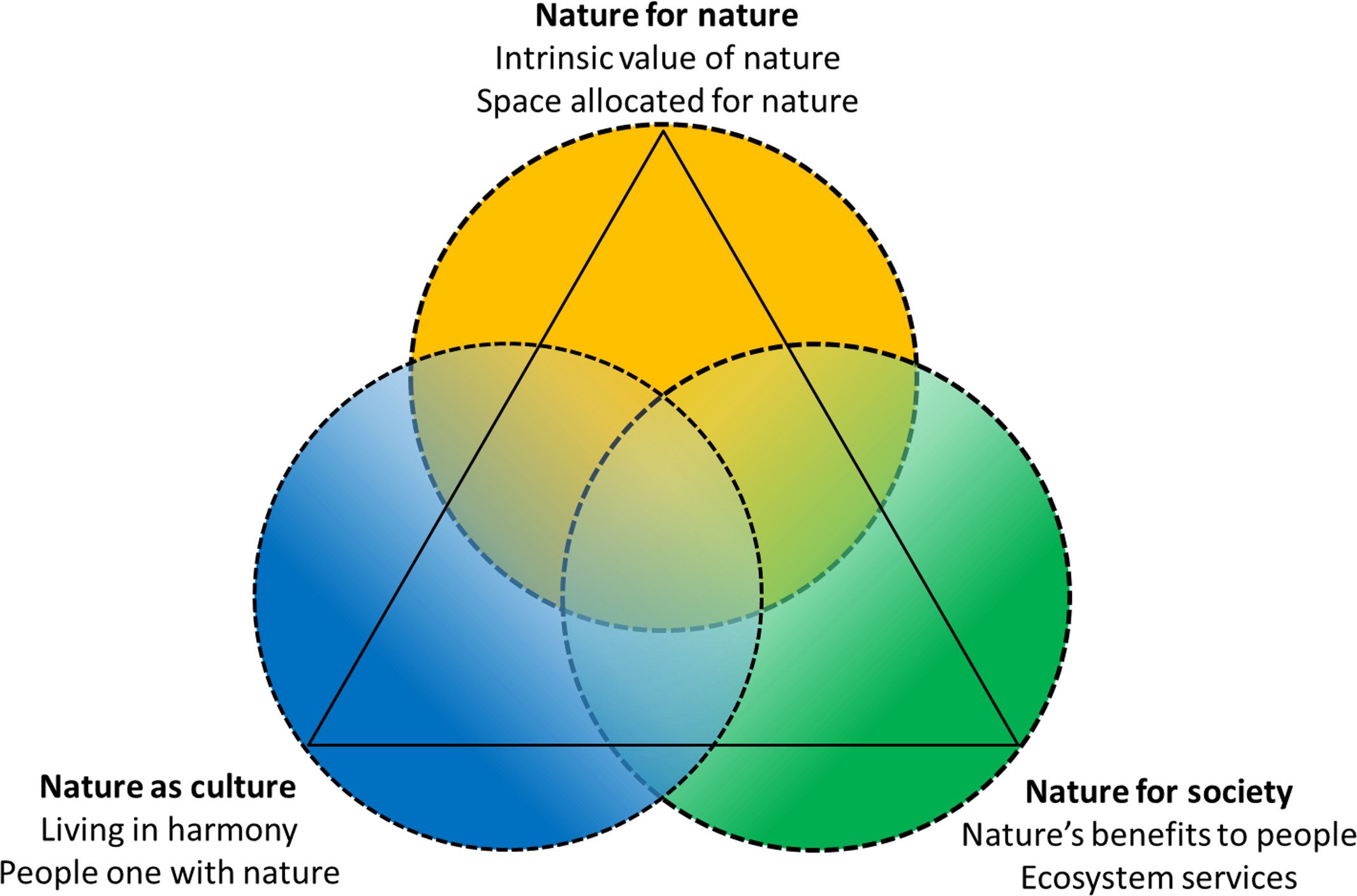The Nature Futures Framework triangle
The Nature Futures Framework (NFF) captures diverse, positive values for human-nature relationships in the form of a triangle. It was developed by the IPBES task force on models and scenarios to help develop pluralistic desirable nature futures. It has and can be used in a variety of ways.
At each of its corners, the Nature Futures Framework considers three main ways of valuing nature - nature for nature, nature for society, and nature as culture:
In the nature for nature perspective, people view nature as having intrinsic value, and value is placed on the diversity of species, habitats, ecosystems and processes that form the natural world, and on nature’s ability to function autonomously.
The nature for society perspective highlights the utilitarian benefits and instrumental values that nature provides to people and societies.
The nature as culture/one with nature perspective primarily highlights relational values of nature, where societies, cultures, traditions and faiths are intertwined with nature in shaping diverse biocultural landscapes.
Kim et al (2023)
Desirable futures developed through use of the NFF may be place- or context-specific, and adapted to address local cultures, values, or questions. Examples of various ways the framework can be used to develop desirable futures for nature are highlighted here.
The intention is that through utilisation of the NFF, the state of a place, or the planet, can be improved across one or more of these perspectives. Therefore, one aims to move a place from a current condition, one that is often degraded from one or more of these perspectives, to a ‘higher score’. As one approaches high scores in one of the perspectives, there may be trade-offs or potential conflicts with others at various scales.
Pereira et al. (2020)
In the example to the right, actions take place to improve nature and nature’s contributions to people across one or more value perspectives toward a more desirable nature futures frontier. Therefore, temporal pathways (represented by the dotted lines in the figure) can be plotted from the present state to the future. As such, the NFF combines a target-seeking approach to scenario development (to determine what is inside vs outside the triangle, i.e. desirable vs undesirable) with an exploratory approach (to represent the diverse range of values that underlie desirable futures within the triangle).
The space within the triangle represents a continuum or gradient between these three value perspectives. Resultantly, all locations within the triangle relate to each of the three corners and thus offer some combination of all three value perspectives - as represented by the coloured circles associated with each value perspective blurring as they intersect.
The NFF does not aim to identify any particular narratives or scenarios as preferred based on their location within the NFF triangle, reflecting that value preferences vary culturally and geographically.




